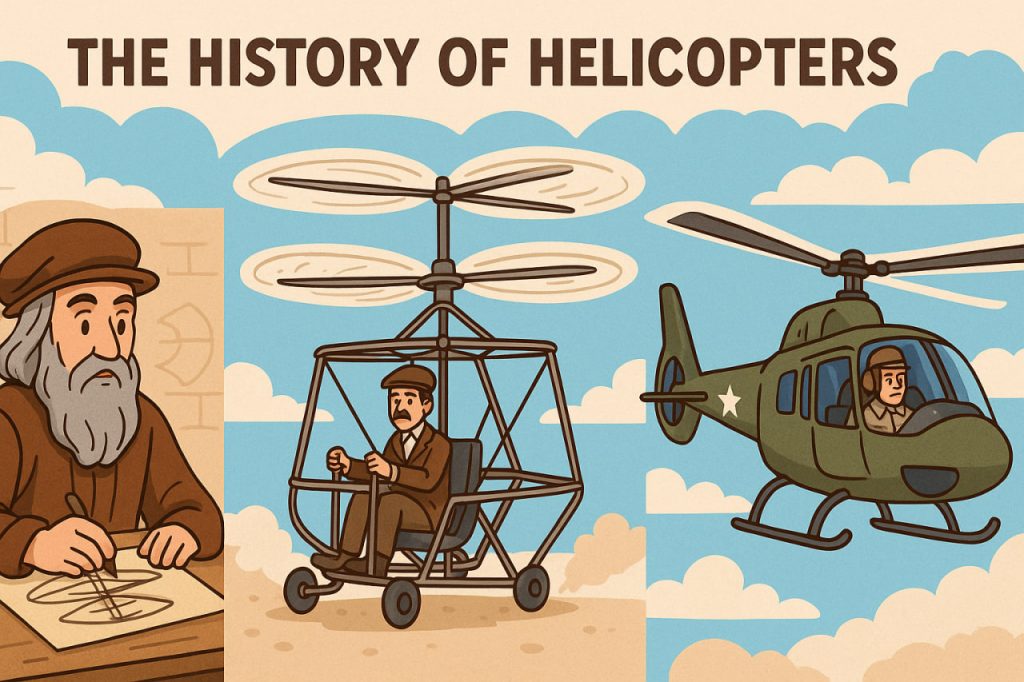The idea of vertical flight predates actual aviation by centuries. In the 15th century, Leonardo da Vinci drew a design of a helical air screw—a device resembling a modern rotor. Although it was never built, this early concept inspired future inventors to imagine flying machines that could rise straight into the air.
By the 19th century, inventors developed rudimentary helicopter models, but these lacked the power to lift off. Still, the dream of controlled vertical flight was becoming more tangible.
Early Successes in the 20th Century
The first real breakthrough occurred in 1907, when Paul Cornu, a French engineer, built a machine that briefly lifted off with a person on board. It was unstable, but it proved the concept.
In 1936, Heinrich Focke in Germany built the Focke-Wulf Fw 61, the first practical and controllable helicopter. This marked the true beginning of modern rotary-wing aviation.
World War II: The Helicopter Goes to War
During World War II, helicopters saw their first large-scale applications. Both the U.S. and Germany used them for rescue missions, reconnaissance, and communication. Notably, the Sikorsky R-4, created by Igor Sikorsky, became the world’s first mass-produced helicopter and served in the U.S. military.
This period greatly accelerated helicopter technology and proved its strategic importance.
The Cold War and Civilian Use
In the Cold War era, helicopters became essential military tools—used for transport, combat, and anti-submarine missions. The Bell UH-1 “Huey”, famous from the Vietnam War, became a symbol of helicopter utility in combat zones.
Civilian use also expanded rapidly: emergency medical services, firefighting, aerial surveying, oil rig transport, and tourism all began to rely on helicopters.
Modern Advances and the Future
Today’s helicopters are marvels of engineering, equipped with GPS navigation, fly-by-wire controls, composite materials, and quiet engines. Companies like Airbus, Bell, Sikorsky, and Leonardo are pushing boundaries to develop faster, safer, and more efficient designs.
The future includes electric helicopters, hybrid engines, and autonomous aerial vehicles that blend drone and helicopter technologies. Urban air mobility is on the horizon, where flying taxis may become a common sight.
Glossary
- Helicopter – A flying machine that takes off and lands vertically using a rotating main rotor.
- Main rotor – The large spinning blade on top of a helicopter that provides lift.
- Igor Sikorsky – Aviation pioneer who created the first successful mass-produced helicopters.
- Composite materials – Advanced materials used in aircraft for strength and reduced weight.
- Fly-by-wire – A system where computers control flight operations instead of direct mechanical links.


